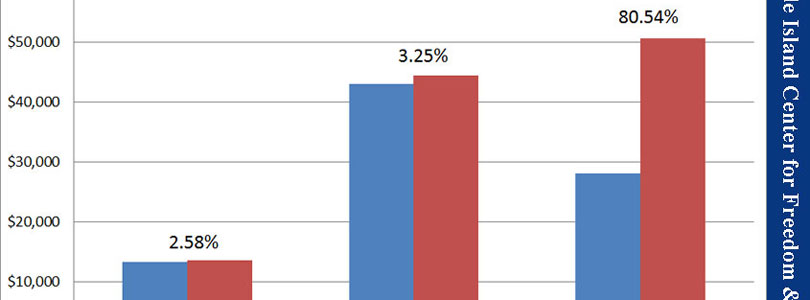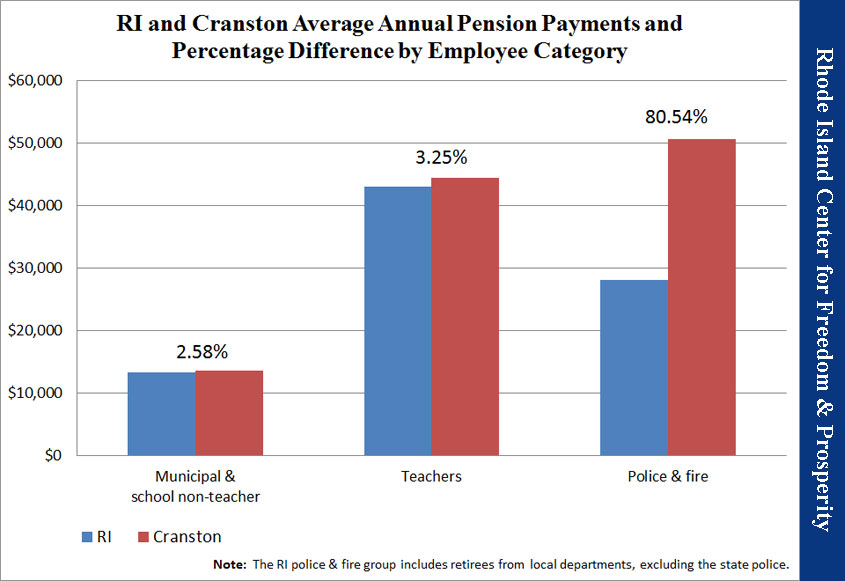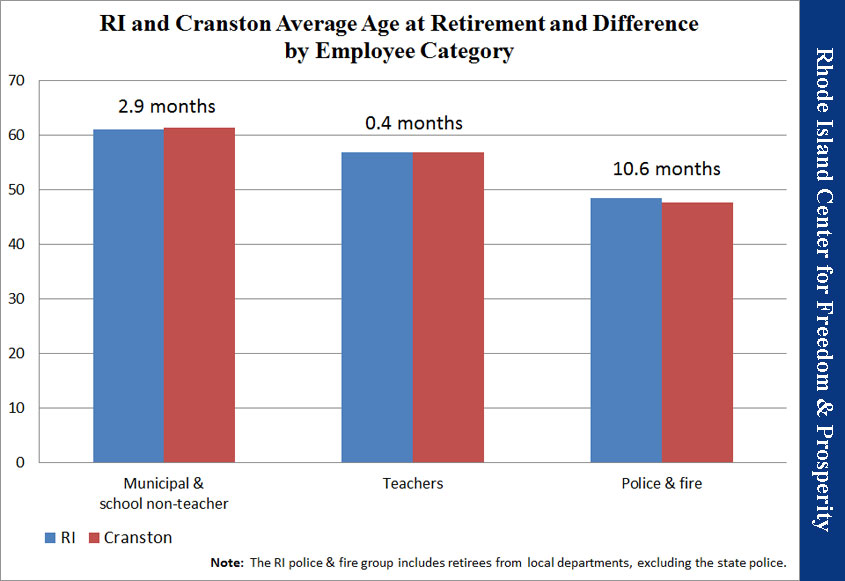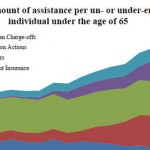Cranston Police & Fire Pensions 80% More Generous than MERS Peers, Other Plans Higher, Too
The RI Center for Freedom & Prosperity’s release of pension data for Cranston makes comparisons possible with retirees in the state system, whose records the Center posted in the fall. When it comes to the average annual pension payment given to its retirees in the state Employees’ Retirement System (ERSRI), Cranston pays only a few percentage points more than the average for all cities and towns; its local fire and police retirement plans, however, are dramatically more generous. (Note that none of the following comparisons include retirees from the state police.)
Municipal and non-teacher school employees receive an average of $13,628 per year in Cranston, but $13,285 in the state system overall, leaving Cranston 2.58% higher. For teachers, the difference is greater, with $44,425 for Cranston and $43,027 overall — or 3.25%. The premium paid to Cranston retirees explodes for police and fire: Combining Cranston’s local system with its handful of retirees in the state plan yields an average payment of $50,654 for the city, compared with $28,057 for the state system overall, or an 80.54% difference. The generosity gap becomes greater still if only widows and other beneficiaries are considered; for Cranston the annual average is $31,529, while for the state fire and police category, it’s $11,876 (a 165.49% difference).
A look at the average age of retirement suggests that Cranston employees are not receiving more because they are working later into their lifetimes; they’re not.
Although Cranston employees work until slightly older ages, municipal and non-teacher school employees work to age 61, and teachers work until just a little before their 57th birthdays. When it comes to fire and police personnel, however, Cranston employees work almost a full year less, to 47.6 years old, versus 48.5 for the state PF system overall.
Even removing Cranston police and fire retirees in the local plan from consideration shows the city to be out of sync with other municipalities. The 548 police and fire retirees in ERSRI receive an average of $28,057 per year, having retired at 48.5 years old. For Cranston’s 13 police and fire retirees covered by the state, the numbers are $40,893 and 44 years old.
An additional layer of comparison is possible by dividing up pensioners by “benefit structure.” Only Cranston and South Kingstown have retirees listed separately from the more general PF20 and PF25 groups (police and fire 20 and 25 year, respectively). Viewed separately, South Kingstown’s plan is more generous than the state overall, but still nowhere near Cranston’s. The average pension payment is $31,510, with the average age at retirement of 50.3. So, while that town’s police and fire retirees do receive a bit more than their counterparts in the more generic state plans, they also worked until they were two years older.
Of course, there are likely to be specific explanations for every difference to be found in such data sets, some of them substantial. But when a particular city or town consistently falls on one side of the state average, those explanations will probably point to a need for change.





